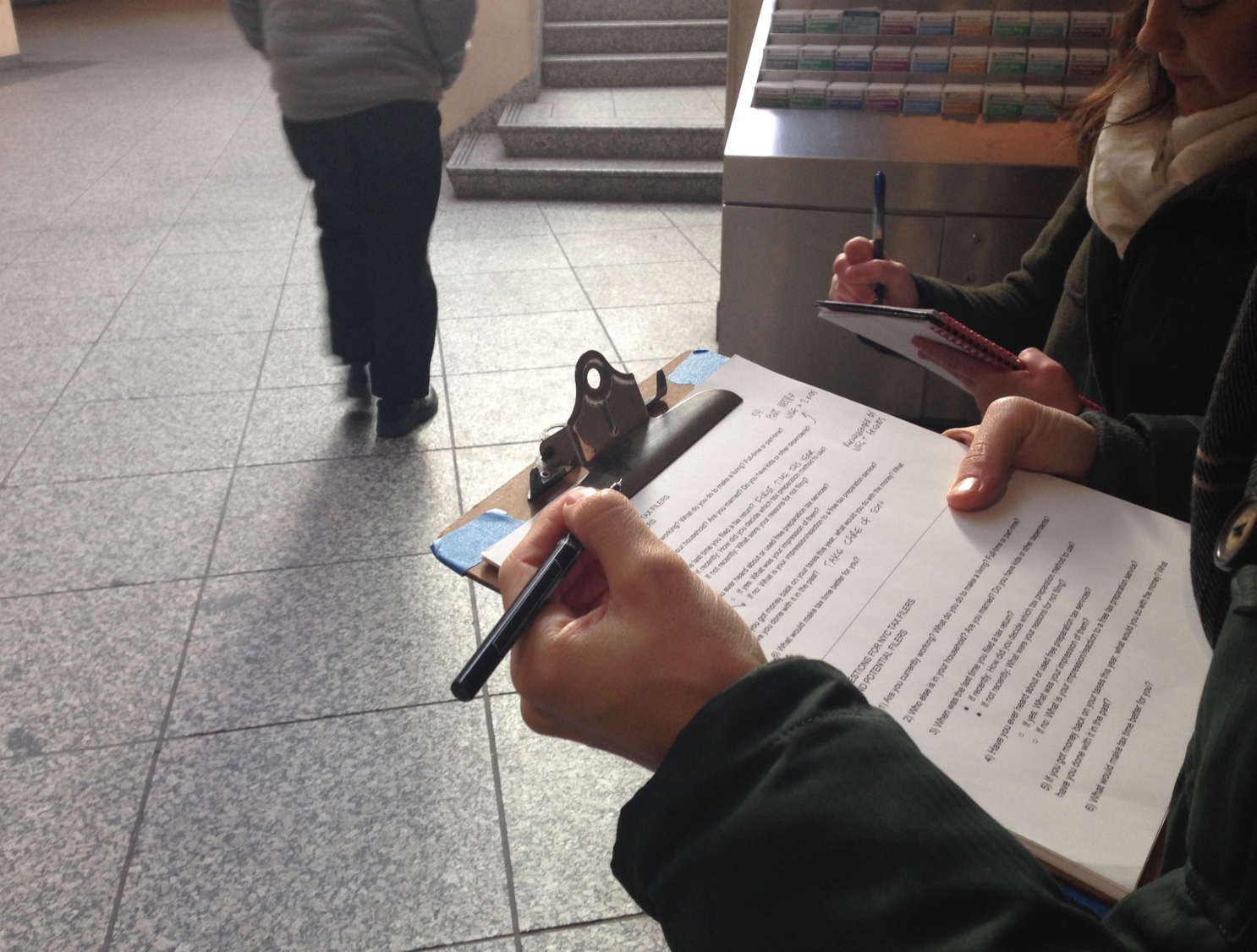Discovery
The discovery phase is an inquiry-based learning process to acquire first-hand experience of the challenges, opportunities and capabilities experienced by the various stakeholders of the service.
The production of a service almost always involves more groups of people than just those who directly benefit from or deliver the service; vendors, policymakers, regulators, even “non-customers” in the general public may be affected by even the smallest change to how the service works, and may have uniquely valuable insights that can contribute to the success of the project. That is why this first phase of a service design project requires the team to familiarize themselves with all the stakeholders of the service in question — the most critical components of this phase are identifying challenges and opportunities in the service, assessing the capabilities of all parties involved, and understanding the value that the service is intended to deliver.
Although this stage is often referred to as "design research," we prefer to call it "discovery", as this term emphasizes the sometimes-accidental nature of making sense of a service and its complex moving parts. What we might uncover about a service ranges from mundane findings to surprising new insights about how a system or service really works. The most valuable insights are often hidden within the “intangibles” of service production, and are only visible to those closest to it.
Learning about the problems and resources of all stakeholders involved in the service necessitates a variety of research methods. Drawing from social science methodologies, we carry out interviews, observe people’s interactions, and conduct literature reviews. Although our starting point is a “blank slate” exploration of the service, we proceed with the understanding that any new discovery or new way of thinking about the service could have larger social or policy implications. During the discovery phase, we expect to encounter conflicting interests among different parties — but our ultimate goal is to promote engagement and empathy with the design process, and arrive at a solution that benefits all.
We use the term “discovery” with caution. Colonizing projects repeatedly claim to have ‘discovered’ peoples and places, which of course were already active and meaningful sites. We do not stand by the understanding that there is a world out there independent of us that can be discovered through research and design.
Tools + Techniques
BACKGROUND RESEARCH
Before trying to make any discoveries of our own, we learn what we can from the work of others. Reviewing surveys, studies, essays, articles, and other literature allows us to build on existing knowledge and direct our efforts toward unpacking and analyzing what has not yet been discovered or considered. In addition to this focused secondary research, we often conduct a broader exploration of potentially analogous products or programs that could offer new ways of thinking about the specific services that we are trying to design or change.
SYSTEM DIAGRAMMING
When words aren't enough, we visually depict what we learn. Mapping out service systems and diagramming relationships between groups of people can help put discovery findings in context, align the understanding of collaborators and partners, and highlight potential areas of opportunity for innovation. We often find the process of creating these visualizations to be as revealing as the visualizations themselves, so we try to think about them as evolving documents and working theories.
STAKEHOLDER INTERVIEWS
A significant part of our discovery work is devoted to conducting interviews of the users, providers, and other stakeholders within a service. Typically, these are semi-structured conversations guided by a flexible set of prepared questions. Instead of asking interviewees about what they may want or need, we try to engage them in telling stories about what they actually feel and do. This allows us to collect actionable insights, test initial theories and assumptions, and foster empathy and shared understanding between our design team and service stakeholders.
CONTEXTUAL OBSERVATION
In addition to simply asking service providers and clients about their experiences, we often seek out opportunities to directly observe them using, providing, or supporting the service(s) in question. This allows us to account for the fact that there is sometimes a difference between what people say they do and what they actually do. In-person observation and on-site "shadowing" of stakeholders also provide us with a visceral sense of the conditions in which a service takes place and help us understand the design constraints present in the service context.
THEMATIC ANALYSIS
Once we have gathered enough insights to give us a sense of the main challenges and opportunities that exist within a particular service context, we step back and look for patterns or themes emerging from the data. Writing or printing the individual insights on cards or sticky notes and tagging, coding, or categorizing them in different ways allows us to create novel combinations of ideas, reframe our understanding of old design problems, and reveal new solution spaces that we might have otherwise overlooked.
STAKEHOLDER PERSONAS
In order to communicate our discovery findings to partners and collaborators, and to help maintain a human-centered focus in our design process, we often create fictional but representative characters, or "personas," that embody important qualities of the stakeholders or situations we are designing for. These personas may also play important roles in ideation or scenario-building activities, and they can serve as proxies for stakeholders and advocates when considering the needs of these groups in later decision making and consensus building.
References + Resources
Informing Our Intuition - Jane Fulton Suri
Why We Buy: The Science of Shopping - Paco Underhill
Communicating Design Research Knowledge - Lois Frankel
The Agency of Mapping - James Corner
Deconstructing Analysis Techniques - Steve Baty
The Social Design Methods Menu - Lucy Kimbell + Joe Julier
Design Research: Methods and Perspectives - Brenda Laurel
Doing Research In The Real World - David Gray













